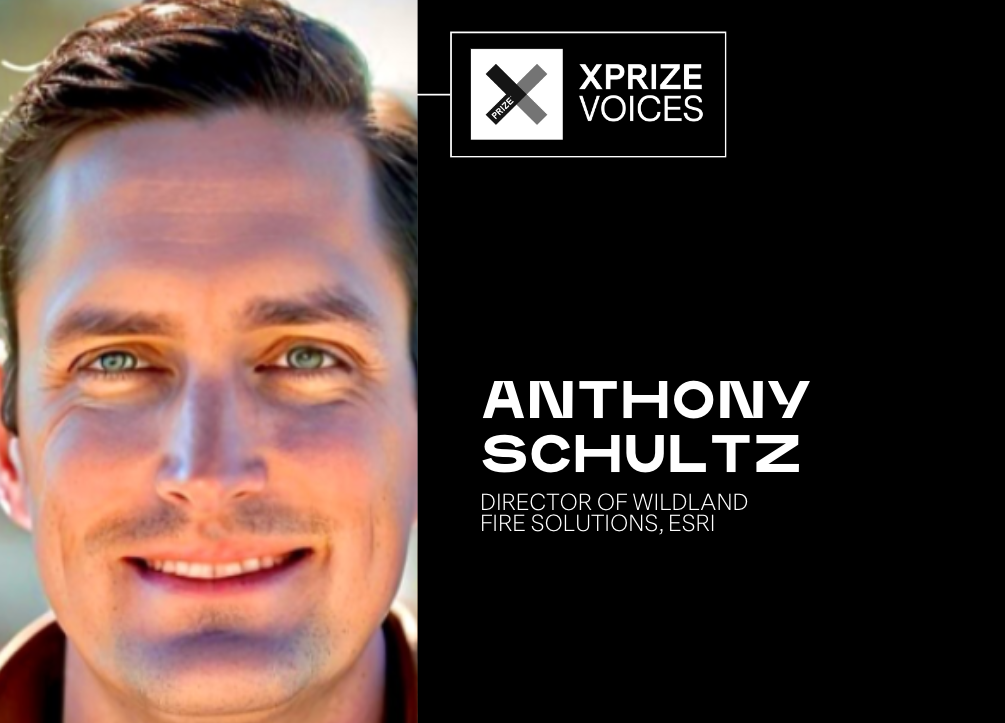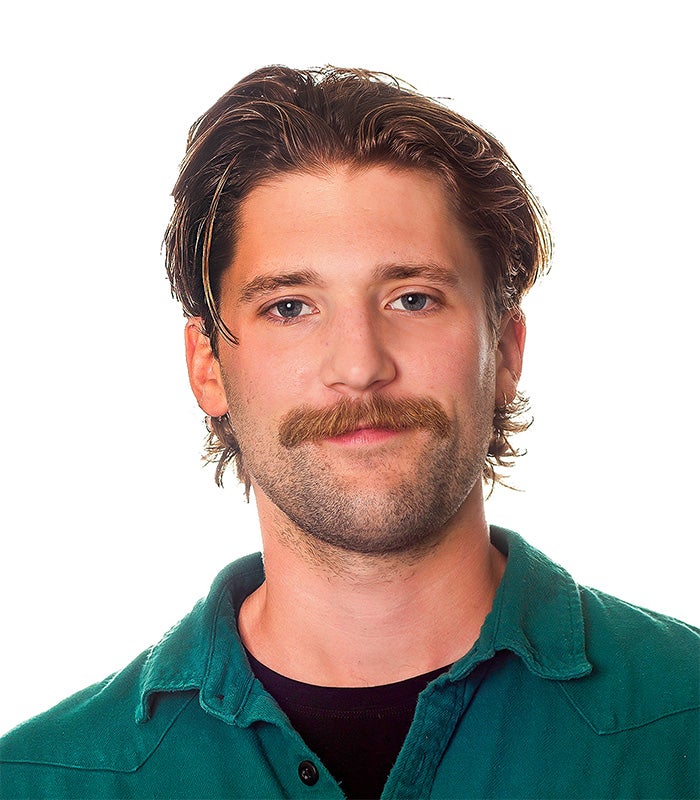
In our latest installment of XPRIZE Voices, we are thrilled to introduce Anthony Schultz, the Director of Wildland Fire Solutions at Esri, a global leader in Geographic Information Systems (GIS) technology. Esri is a key partner in the XPRIZE Wildfire competition, providing essential GIS technology to support the participating teams.
With a robust background in wildland fire management and operations, Anthony has been at the forefront of integrating advanced GIS solutions to enhance wildfire management and public safety. Before joining Esri, he served as the Assistant State Forester and Fire Management Officer for Wyoming, bringing a wealth of field experience to his current role.
He has dedicated his career to improving the ways we manage and respond to wildfires. At Esri, he leads efforts to provide cutting-edge GIS solutions to help firefighters and emergency responders make informed decisions on the ground. Esri’s flagship product, ArcGIS, is widely used by government agencies and organizations to collect, analyze, and visualize geospatial data.
GIS is a powerful tool that allow users to capture, store, manipulate, analyze, manage, and present spatial or geographic data. GIS technology integrates various data types to create maps and 3D scenes, helping users visualize complex patterns and relationships. This technology is essential in many fields, including urban planning, environmental management, transportation, and public safety.
At the 2024 ESRI Safety and Security Summit, ESRI and XPRIZE announced a formal partnership focused on their shared commitment to support innovators to address humanity's greatest challenges. This commitment includes XPRIZE Wildfire, a competition aimed to revolutionize wildfire detection and suppression through two innovative tracks.
Track A focuses on autonomous, real-time detection and reporting of wildfires from space, providing critical early warning and situational awareness. Track B challenges teams to develop advanced autonomous systems for rapid wildfire suppression, reducing the need for human intervention and minimizing risks to firefighters. By fostering cutting-edge technologies, XPRIZE Wildfire seeks to transform how we prevent, detect, and respond to wildfires, ultimately enhancing public safety and environmental stewardship.
Discover more about Anthony Schultz and his impactful work with Esri, and join us as we explore the innovative intersection of GIS technology and wildfire management in this insightful interview.
XPRIZE
What kind of work does Esri do, and how did it get started working in wildfires?
Anthony Schultz
We are the global market leader for GIS, Geographic Information Systems, software. Most government bureaus and states in the US utilize our software, a product called ArcGIS, which is what people typically associate with Esri.
In 2016 the National Interagency Fire Center, or NIFC, stood up a large ArcGIS Online capability that now allows every wildland firefighter and incident management team in the country to house the data they collected on a common map. This allowed us to build a common operating picture for the firefighters in the field.
NIFC provides licenses for every firefighter in the field to use data collection tools, Field Maps and Survey123. We were certainly used prior to 2016 but it looked different from agency to agency.
XPRIZE
What does this kind of data collection look like?
Anthony Schultz
That data comes in all shapes, sizes, and formats. Firefighters are going out in the field with their mobile devices and mapping not just where a fire is, but what's the best access point? Where are our safety zones or escape routes? Where are some of the best places for helicopters to draw water? That's one way to collect data, boots on the ground. Another way to do that is through remote sensing, via drone or by getting imagery of a burn area. We also have live data feed, like infrared data from the MODIS satellite where NASA provides a global data set.
We're plotting all of that information on a web map that works online or offline. From there, it really depends on what kind of data you need. What question are you trying to answer? And that'll lead you down the path towards what data set might be appropriate.
XPRIZE
This is a lot of information, how do you make sure people get what they need without being overwhelmed by it?
Anthony Schultz
It's a double-sided coin. When you overload responders by shoving data in their face, it doesn't really do anybody any good. It's not usable intelligence at that point, it's just information.
We want to really put thought behind what that responder needs or what data they need to answer their most pressing questions. Where's the fire currently? Where's the fire headed? What is the fuel loading in this area? Organizing and presenting all of that data is key. One way the wildland industry does this is through a process called potential operational delineations, PODs.
This process breaks up a large geography like a forest into bite-sized chunks and we can say, what if a fire happens here? Where would we most likely suppress it? Where would we be most likely to impede its spread? Maybe we're deep in the wilderness where fire regenerates the forest. Maybe we want to use fire in those areas. PODs help us wrap our heads around that.
That then helps us decide what data we can leverage for response, what we can leverage for evacuation planning, what we can leverage for pre-fire preparedness mitigation.
Simply vomiting data or information to the responder does a bit of a disservice. Honing in on specific use cases helps responders in the field. We want to make sure they're only receiving information that is operational intelligence.
XPRIZE
How do you integrate all the different agencies and individuals and make sure that everyone gets what they need?
Anthony Schultz
Every state is going to handle solving that problem differently. What works for Portland, Maine might not work for Portland, Oregon. They have very different concerns from a fire perspective and as a result they might choose to house or collect data differently.
We will typically leverage our ArcGIS Online implementation for a lot of information and data sharing. NIFC maintains one of the largest ArcGIS Online instances that we maintain, they have over 23,000 users and it's expected to go over 30,000 in the next few years.
What's unique is that a lot of these users are out collecting data in the field. It's mobile first and geared towards data collection. In Maine, Florida, or Idaho, they are logging into that same ArcGIS Online instance and collecting data on a common web map. This is how we see our tools utilized not just to collect data, but to do so in a manner that breaks down agency barriers and allows them to share data across agencies and hierarchies of government. Municipalities can share with federal governments and vice versa.
XPRIZE
What spoke to you about XPRIZE Wildfire?
Anthony Schultz
There is a kind of holy grail in fighting wildfire. We really want to know where our people are in real time, and we're getting close to achieving that as an industry. But we're missing where the fire is in real time. We can infinitely enrich the operational usefulness of data when we know where our firefighters are in relation to the fire. The space-based fire detection track really starts chipping away at providing that information.
Track B, the autonomous fire suppression track, is also really interesting. Imagine a world where we have space-based detection systems that detect fires and we're able to immediately launch an autonomous aircraft to get intel. If that is for mapping, great. But if it ends up actually going and picking up water and dropping water on that fire, that would be ideal. We could remove the human element, reduce risk to pilots, and hopefully improve public safety and even environmental stewardship.
XPRIZE
How is Esri working with the XPRIZE Wildfire and competing individuals and teams?
Anthony Schultz
We're donating a lot of this capability to XPRIZE in general, but each of the teams will have access to our products so that they can submit their data, analyze it, and then submit it for judging. You have space-based detection systems, that's fantastic, but you need a map too. The partnership just makes sense. It is a critical element to making that workflow successful.
XPRIZE
Are there specific technologies or advancements that you hope this competition brings?
Anthony Schultz
100% yes. If you had told me when I was running the state of Wyoming fire program that I would have a commercially available satellite detection program that would automatically tell me whenever I had a fire start, and then update me on the spread for its lifespan, that's gold.
That tips the scale in the firefighter's favor to some degree. The autonomous fire suppression track, that's like Star Trek stuff. We're probably five to ten years away from policies and agencies starting to adopt some of this technology, but XPRIZE is leading the way in starting that conversation and bringing some of that to market.
XPRIZE
If we look at how we fight wildland fires right now, what do you hope the change will be after the competition is over?
Anthony Schultz
Ultimate success is about the human experience with wildfire. What we should be shooting for is that in the places that experience wildfire, citizens can go about their normal day. You might see smoke in the air. You might know that there's a fire, but by and large, daily life goes on uninterrupted. We have no fatalities, zero structures lost, and the environment is protected appropriately from a fire severity standpoint.
(Editor’s Note: Learn more about “good fires” versus destructive extreme wildfire events here)
To steal a page from Kate Dargan, being able to understand not just that there's a fire and where it's burning, but where it's burning too hot or too intense. We might be able to send that autonomous response capability to those problem areas.
We can start doing that same thing for the environment by protecting sensitive ecosystems by suppressing bad areas of a fire while letting good areas burn. To me that's ultimate success and I think the XPRIZE with both of these tracks is starting to angle towards that vision of success.
Learn more about XPRIZE Wildfire, and the teams competing to transform wildfire technology, at xprize.org/wildfire.
